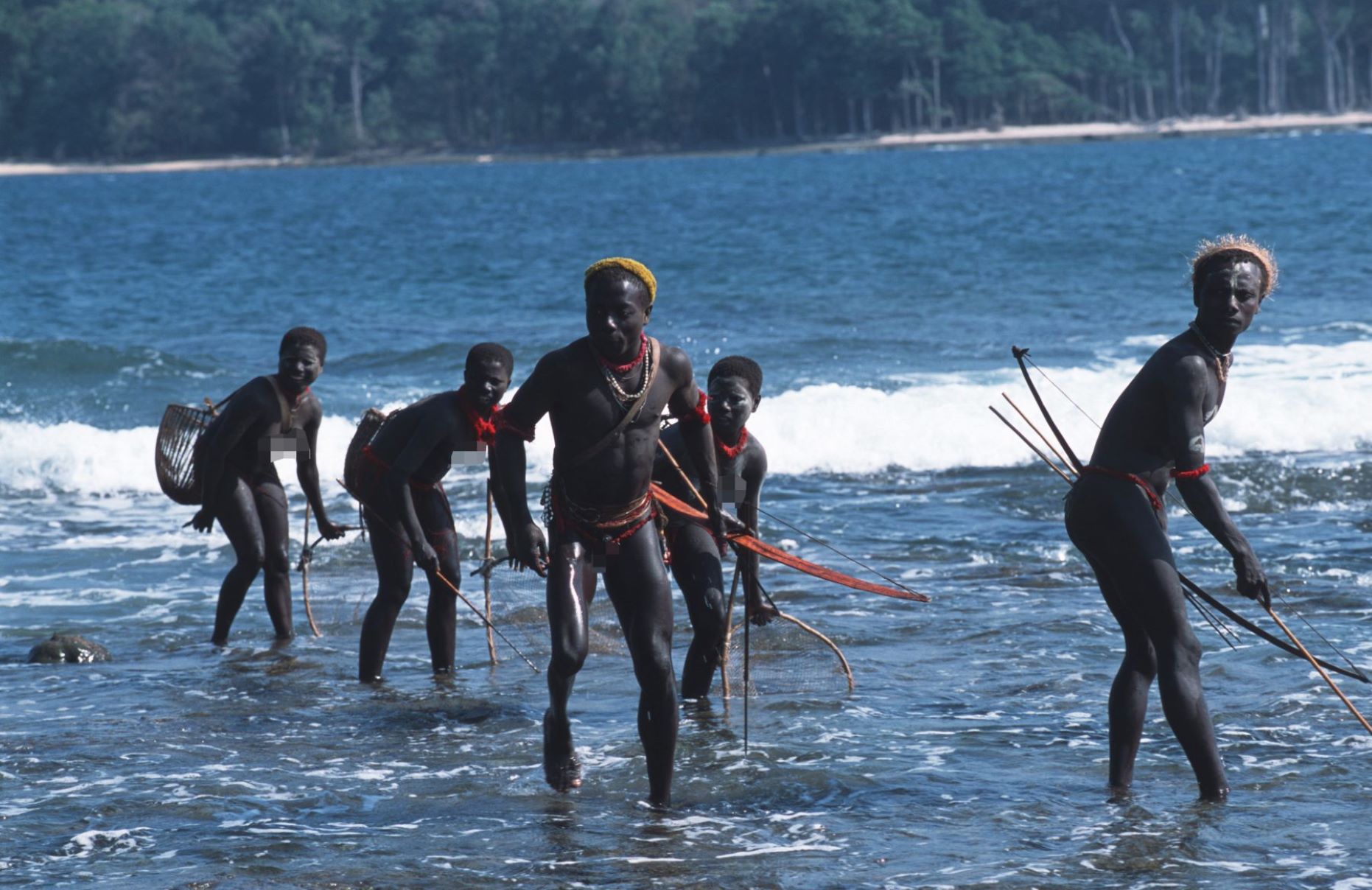
Ever wondered about the hidden gems of the Indian Ocean? The Andaman Islands, an archipelago of over 300 islands, offer a blend of natural beauty, rich history, and unique cultures. Located about 130 km southwest of Myanmar, these islands stretch for 620 miles between Myanmar and Sumatra, Indonesia. Home to the only active volcano in South Asia, Barren Island, and the fiercely independent Sentinelese tribe, the Andamans are a world apart. With lush forests, vibrant coral reefs, and a history marked by colonial prisons and World War II relics, the Andaman Islands are a captivating destination waiting to be explored.
Key Takeaways:
- The Andaman Islands, located in the Bay of Bengal, are home to diverse indigenous tribes, stunning marine life, and unique geological features, making them a fascinating destination for tourists and nature enthusiasts.
- With over 300 islands, the Andaman archipelago boasts the only active volcano in South Asia, a rich cultural heritage, and a tropical climate, offering a blend of history, natural beauty, and adventure for visitors to explore.
Geographical Wonders of the Andaman Islands
The Andaman Islands are a stunning archipelago with unique geographical features. Let's dive into some fascinating facts about their location, formation, and natural beauty.
-
Geographical Location: The Andaman Islands lie in the Bay of Bengal, about 130 km southwest of Myanmar's Ayeyarwady Region. They form an arc stretching southward for about 620 miles between Myanmar and Sumatra, Indonesia.
-
Number of Islands: This archipelago comprises more than 300 islands, including North, Middle, and South Andaman, collectively known as Great Andaman. Other notable islands include Landfall Island, Interview Island, the Sentinel Islands, Ritchie’s Archipelago, and Rutland Island.
-
Inhabited Islands: Only a few islands are inhabited. The main ones are North Andaman, Middle Andaman, and South Andaman. Port Blair, located on South Andaman Island, serves as the territorial capital.
-
Geological Formation: The Andaman Archipelago is an oceanic continuation of the Burmese Arakan Yoma range in the north and the Indonesian Archipelago in the south. The geology includes Late Jurassic to Early Eocene ophiolites and sedimentary rocks, deformed by numerous deep faults and thrusts with ultramafic igneous intrusions.
-
Volcanic Activity: The Andaman Islands host two volcanic islands: Narcondam Island and Barren Island. Barren Island is the only active volcano in the Indian sub-continent, with its latest eruption reported in December 2022.
-
Highest Point: Saddle Peak, located on North Andaman Island, is the highest point in the Andaman Islands, standing at 732 meters (2,402 ft).
Indigenous Tribes and Cultural Heritage
The Andaman Islands are home to several indigenous tribes with rich cultural heritage. These tribes have lived on the islands for thousands of years, maintaining their unique way of life.
-
Indigenous Tribes: The islands are home to several aboriginal groups, including the Great Andamanese, the Onge, the Jarawas, and the Sentinelese.
-
Sentinelese Tribe: North Sentinel Island is home to one of the most isolated human populations in the world, the Sentinelese. They are thought to have lived in the Andaman Islands for up to 60,000 years and have rebuffed all contact with the modern world.
-
Language: The most widely spoken language on the islands is Bengali, followed by Hindi, Tamil, Telugu, and Malayalam. Andaman Creole Hindi is also widely used as a trade language.
-
Tribal Reserves: Some areas are designated as tribal reserves to protect the cultural heritage of the tribes. These areas allow indigenous communities to pursue their means of livelihood undisturbed.
Natural Beauty and Marine Life
The Andaman Islands are renowned for their exceptional marine biodiversity and stunning natural beauty. Let's explore some of the amazing flora and fauna found here.
-
Marine Diversity: The islands host colorful coral reefs that are home to hundreds of exotic fish species, turtles, manta rays, and even whale sharks.
-
Commercial Fishing Ban: Commercial fishing has been banned around the Andaman Islands for over four decades, allowing marine life to flourish.
-
Barren Island Volcano: Barren Island is the only active volcano in South Asia. This small island contains a crater partially filled by a cinder cone that has been the source of eruptions since 1787.
-
Ross Island: Ross Island was the British headquarters for most of the Andaman Islands from 1858 until an earthquake in 1941. The Japanese later converted it into a POW camp during World War II.
-
Indira Point: India’s southernmost point, Indira Point, subsided by 4.25 meters during the 2004 tsunami. It is located on Great Nicobar Island.
-
Geographical Extent: The Andaman and Nicobar Islands stretch approximately 620 miles between Myanmar and Sumatra, Indonesia.
-
Total Land Area: The total land area of the Andaman and Nicobar Islands is approximately 8,249 square kilometers (3,185 square miles).
-
Population (2011 Census): The population of the Andaman and Nicobar Islands as per the 2011 census is 379,944.
-
Maritime Borders: The islands share maritime borders with Indonesia to the south, Myanmar to the north-east, and Thailand to the south-east.
-
Districts and District Capitals: The islands are divided into three districts: Nicobar, South Andaman, and North and Middle Andaman. The district capitals are Car Nicobar, Port Blair, and Mayabunder respectively.
Climate and Terrain
The Andaman Islands have a tropical climate and diverse terrain. Let's look at some interesting facts about their weather and geographical features.
-
Climate: The climate is tropical but moderated by sea breezes. Temperatures typically rise from the low 70s F (about 23 °C) into the mid-80s F (about 30 °C) daily throughout the year. The territory receives roughly 120 inches (3,000 mm) of rain annually.
-
Geographical Features: The terrain is rough, with hills enclosing narrow longitudinal valleys. Flat land is scarce and confined to a few valleys, such as Betapur on Middle Andaman and Diglipur on North Andaman.
-
Nicobar Islands Terrain: The terrain of the Nicobars is more diverse. Some islands, like Car Nicobar, have flat coral-covered surfaces, while others, like Great Nicobar, are hilly with numerous fast-flowing streams.
-
Marine Life: The turquoise waters surrounding the islands teem with dolphins, whales, dugongs, sea turtles, sailfish, sea anemones, and other marine life.
-
Coral Reefs: The islands host colorful coral reefs that are home to hundreds of exotic fish species, turtles, manta rays, and even whale sharks.
-
Birgus Latro (Giant Crab): The islands are home to the largest living arthropod in the world, Birgus Latro or the giant crab.
Historical Significance and Natural Disasters
The Andaman Islands have a rich history and have faced significant natural disasters. Let's explore some historical events and natural calamities that have shaped the islands.
-
Historical Significance: The islands have been an important part of ancient trade routes between India and Myanmar. They were visited by the navy of the English East India Company in 1789.
-
Administrative History: The Andaman and Nicobar Islands became a union territory of the Republic of India in 1956.
-
2004 Tsunami: On December 26, 2004, the coast of the Andaman Islands was devastated by a 10-meter-high tsunami following the 2004 Indian Ocean earthquake. This disaster resulted in over 2,000 deaths and left more than 4,000 children orphaned or with one parent.
-
Earthquakes: On August 11, 2009, a magnitude 7 earthquake struck near the Andaman Islands, causing a tsunami warning. On March 30, 2010, a magnitude 6.9 earthquake also struck near the islands.
-
Geological Features: The geology includes Late Jurassic to Early Eocene ophiolites and sedimentary rocks. The terrain is characterized by numerous deep faults and thrusts with ultramafic igneous intrusions.
-
Flora: The Middle Andamans harbor mostly moist deciduous forests. North Andamans is characterized by wet evergreen forests with plenty of vegetation.
-
Fauna: The islands are home to a diverse range of fauna, including a large population of elephants in the forests of North Andaman and various bird species like the Andaman Teal and the Nicobar Pigeon.
-
Conservation Efforts: The islands are a protected area with several national parks and wildlife sanctuaries. Conservation efforts are in place to protect endangered species like the Andaman wild boar and the Nicobar pigeon.
Tourism and Economy
The Andaman Islands are a popular tourist destination with a growing economy. Let's look at some facts about tourism and economic activities on the islands.
-
Tourism: The islands are known for their picturesque landscapes and azure waters. Activities like snorkeling, diving, and boat trips are popular among tourists.
-
Cellular Jail: The Cellular Jail in Port Blair is a major tourist attraction, offering insights into the history of the islands.
-
Economic Activities: The primary source of income for the islanders is fishing. However, tourism has become increasingly important in recent years.
-
Local Handicrafts: The islands have a growing economy based on small-scale industries and local handicrafts.
-
Cultural Significance: The islands have a rich cultural heritage. The indigenous tribes have maintained their unique way of life and culture despite centuries of external influences.
-
Melting Pot of Cultures: The islands are a melting pot of cultures, with influences from South India, Southeast Asia, and other parts of the world.
Final Thoughts on the Andaman Islands
The Andaman Islands are a true gem in the northeastern Indian Ocean. With over 300 islands, only a few are inhabited, making them a haven for unique wildlife and untouched natural beauty. From the active Barren Island volcano to the highest point at Saddle Peak, the geography is as diverse as it is stunning. Indigenous tribes like the Sentinelese have lived here for thousands of years, preserving their ancient ways of life. The islands also boast rich marine biodiversity, including vibrant coral reefs and rare species like the giant crab. Historical sites like the Cellular Jail offer a glimpse into the past, while the ban on commercial fishing has allowed marine life to flourish. Whether you're interested in history, culture, or nature, the Andaman Islands offer something for everyone. These islands are a must-visit for anyone looking to explore a unique and captivating part of the world.
Frequently Asked Questions
Was this page helpful?
Our commitment to delivering trustworthy and engaging content is at the heart of what we do. Each fact on our site is contributed by real users like you, bringing a wealth of diverse insights and information. To ensure the highest standards of accuracy and reliability, our dedicated editors meticulously review each submission. This process guarantees that the facts we share are not only fascinating but also credible. Trust in our commitment to quality and authenticity as you explore and learn with us.


